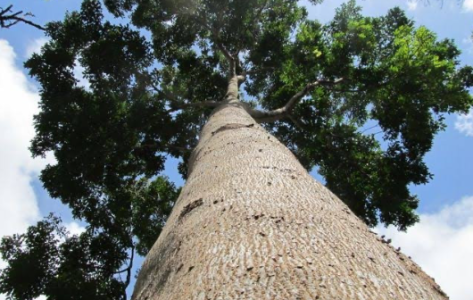In the sun-drenched hills of central Togo, the landscape has begun to change. Once-stripped land now breathes with green again, thanks to the tireless work of Reboisement et Exploitation des Forêts—a reforestation company with a bold mission: to restore forests, manage them sustainably, and empower local communities through environmental stewardship.
But as the seedlings grew, so did the threat of wildfires—a danger that could destroy years of hard work in a single dry-season afternoon.
A Fire Could Undo It All
Wildfires had always been a seasonal threat in this part of Togo. A dropped match, a farmer’s field burn gone wrong, or strong harmattan winds could spark a blaze that raced across the dry grassland with frightening speed.
For Reboisement et Exploitation des Forêts, preventing these fires wasn’t optional—it was essential.
Our work is not just planting,” explained Alex, the company’s Operation Manager. “We are protecting a future. One tree at a time, one firebreak at a time.
Alex Koutodzo
The 5-Meter Shield
To defend the plantations, the company implemented a strict 5-meter firebreak policy. Around each plantation block, a 5-meter-wide strip was kept completely clear of grass, shrubs, and dry vegetation. This bare-earth border acted like a shield, helping to stop fire from reaching the young trees.
Before every dry season, teams were mobilized to inspect and reinforce the firebreaks. Sometimes they burned the edge under controlled conditions—a technique called prescribed burning—to ensure no flammable material remained. Paths were widened where needed. Signs were posted warning locals about the fire risk.
“This firebreak is like a fence,” said one team member. “You may not see it on a map, but it protects everything we’ve built.”
Community: The Eyes and Ears
Still, physical barriers weren’t enough. Wildfires can start far away and travel unpredictably. That’s why the company partnered with local villages, forming vigilance committees trained to detect fires early and report them to authorities.
Each village near a plantation had at least one community forest ambassador—a respected local who received basic training on wildfire behavior, and how to contact the regional firefighting service quickly.
A System That Works
One afternoon in March, a small grass fire broke out near a village bordering the northern plantation. Thanks to a call from a youth committee member, the company’s emergency team was on site in under 30 minutes, supported by local farmers with hoes and water buckets. The fire was contained at the firebreak—just meters from the tree line.
The trees were safe. The system had worked.
A Model for the Region
Over time, Reboisement et Exploitation des Forêts has become more than a forestry company—it’s a model of environmental resilience. Government agencies and other landowners now visit to learn from our integrated fire prevention strategy.
“We believe that forest protection is not a job for one company,” said Kodjo Drofenou, the founder. “It is a partnership between land, people, and purpose.”
A Future Secured
Today, the young plantations of Reboisement et Exploitation des Forêts grow stronger every season—thanks not just to rain and soil, but to the invisible work of cleared firebreaks and vigilant neighbors.
In this region, a new story is growing—rooted in green, and strengthened by partnership with the local communities.



